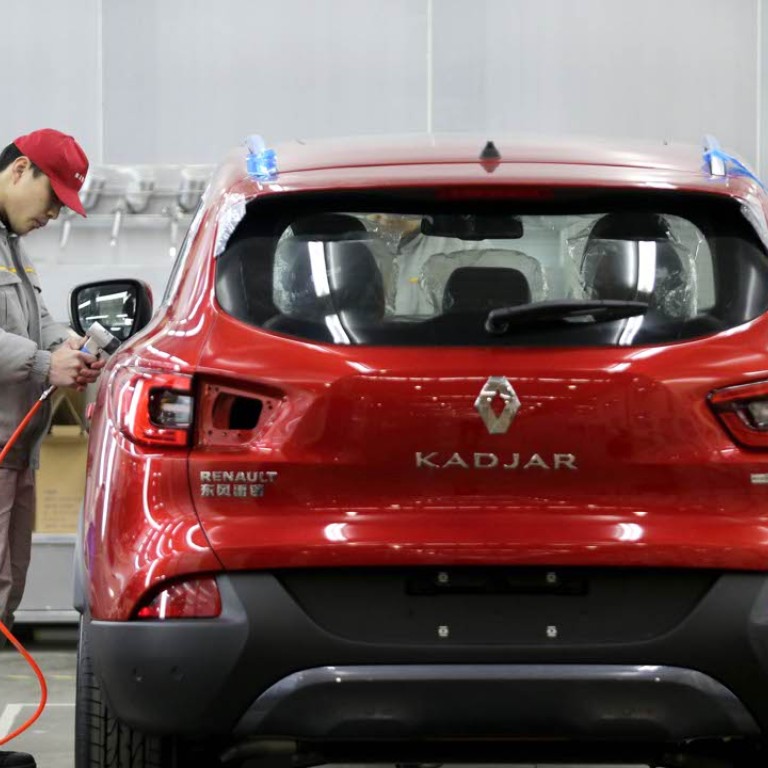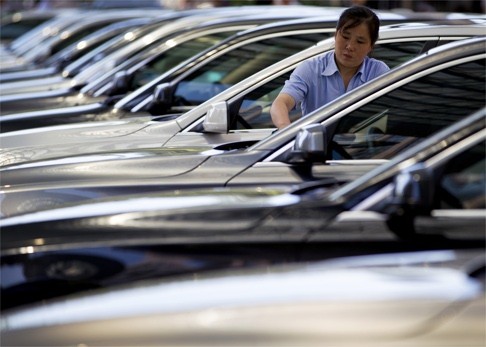
China’s car sales slump in January but analysts still optimistic on outlook for 2016
Most Chinese automakers expected to report better-than-expected results in March, analysts say
China’s auto sector may have experienced sluggish growth at the start of the year, but analysts are still optimistic on the sector as they believe many domestic mainland carmakers could deliver better than expected fourth quarter result in March.
Despite seeing car sales increase 7.7 per cent year on yearin January,sales declined 10.2 per cent month on month after the ending of a government subsidy to support green vehicles, according to a February report by BOCI Research analysts Lou Jia and Eric Hu.
“Although January was a peak season period before [Lunar New Year], the termination of the RMB3,000 subsidy for energy-efficient and eco-friendly vehicles...led to advanced purchases mostly in the low-end sedan segment in [the fourth quarter of last year],” the report said.
Passenger vehicle sales growth fell to 9.3 per cent year on year in January compared with the 18.5 per cent growth recorded in the fourth quarter of last year, while commercial vehicle sales edged down 3.5 per cent.
The BOCI Research report added that original equipment manufacturers like Dongfeng Nissan, Kia joint ventures and Hyundai saw monthly sales fall by over 40 per cent in January.
“OEMs which rushed to achieve their sales target last year have started to cut production and inventory early this year,” the BOCI report said.
Despite the poor showing in sales growth so far this year, BOCI still issued “buy” ratings for SAIC Motor and Changan Automobile, both of which “slightly beat expectations” with their 2015 preliminary results.
OEMs which rushed to achieve their sales target last year have started to cut production and inventory early this year
Fuyao Glass, one of the world’s largest automotive safety glass manufacturers, also received a “buy” rating from BOCI, which believes the glass maker could release results better than market expectation.
A Morgan Stanley report led by analyst Tim Hsiao is also optimistic about China’s auto sector. Hsiao expects most China auto parts makers will report strong results in March when they release their fourth quarter and full year results for 2015. The positive outlook is based on the stronger sales uptick during the peak season last year.
Moving forward, Hsiao said investors should focus on “margin trend amidst growing price pressure from Chinese OEMs” and “the progress of overseas expansion and mergers and acquisitions”.
Orders after the Lunar New Year period would also serve as an indicator for real sell-through momentum, he added.
HSBC analysts led by Carson Ng wrote in a report that domestic and Japanese brands continued to outperform in China’s auto sector and experienced strong growth.
Sales volume for domestic Chinese brands increased 17 per cent year on year in January while their market share expanded to 45 per cent, up from 42 per cent in December and 41 per cent in 2015 overall, Ng said.

Ng and the HSBC analysts named Geely and Dongfeng as their favourite A-share car makers.
“We favour Geely for its strong model cycle in 2016, which should also drive its market share in the SUV segment. We also like Dongfeng due to its attractive valuation and the continuing growth of its two Japanese brands,” Ng said.
The downside risks for Geely, Ng said, would be further deterioration in export markets and increasing competition in the domestic market. For Dongfeng, he said downside risks would be further pricing pressure and exchange rate fluctuations in currencies that may lead to FX losses.
In terms of type of cars that drove growth in the passenger vehicle segment, SUVs and MPVs sales in January rose 60.5 per cent and 15.9 per cent year-on-year respectively, which BOCI said reflects a trend of consumers upgrading from sedans to SUVs and minivans to MPVs. Sedan and minivan sales shrank 9.1 per cent and 31 per cent, respectively.
SUVs are expected to see year-on-year growth of about 38 per cent in 2016 and continue to increase their contribution to overall passenger vehicle sales, according to a second Morgan Stanley report. About 35 per cent of total mainland China passenger vehicle sales came from SUVs in January, up from 29 per cent last year and 21 per cent in 2014.
“Despite more intense competition in the SUV segment, we expect the rising upgrade and replacement demand in China to continue to drive growth in the SUV segment in China in 2016,” the second report said.
“We forecast a 5 per cent year-on-year decline for the sedan segment in 2016 and expect the weakness in demand to be partly offset by the full-year impact of the tax cut.”

